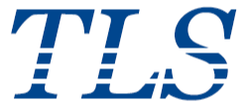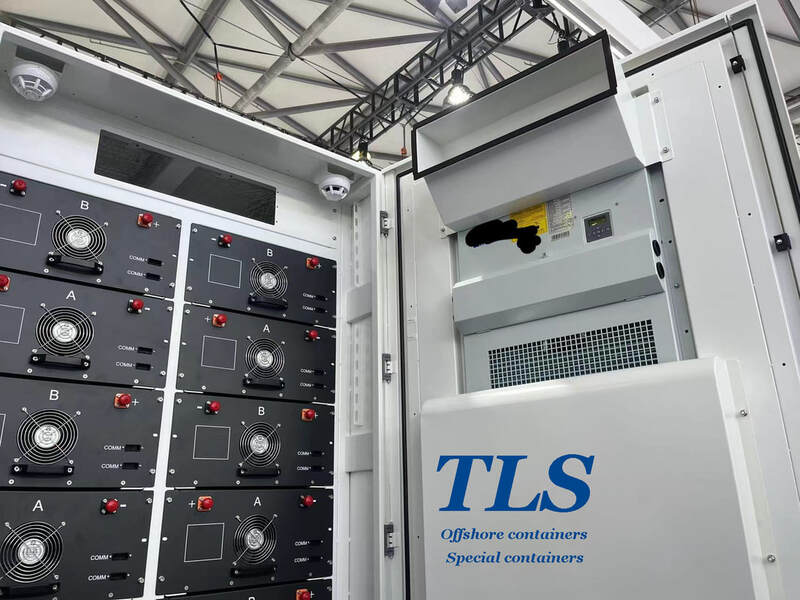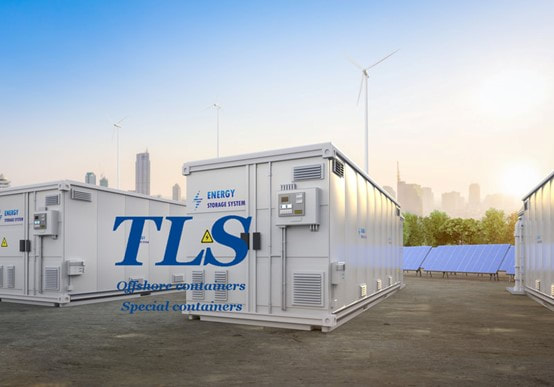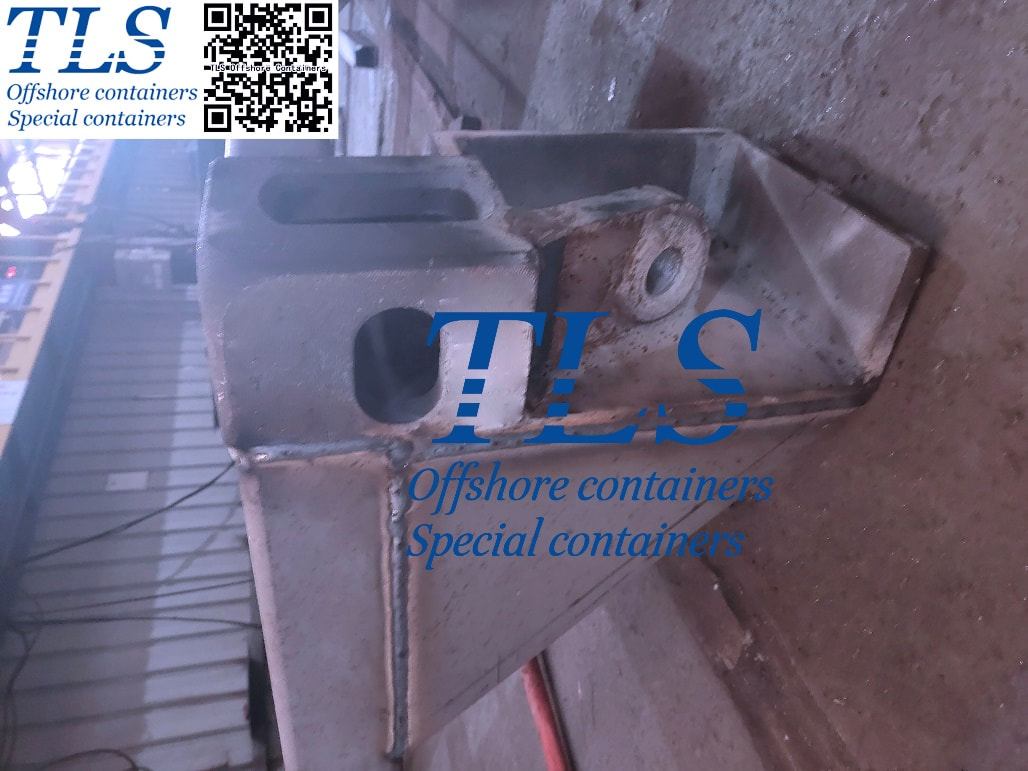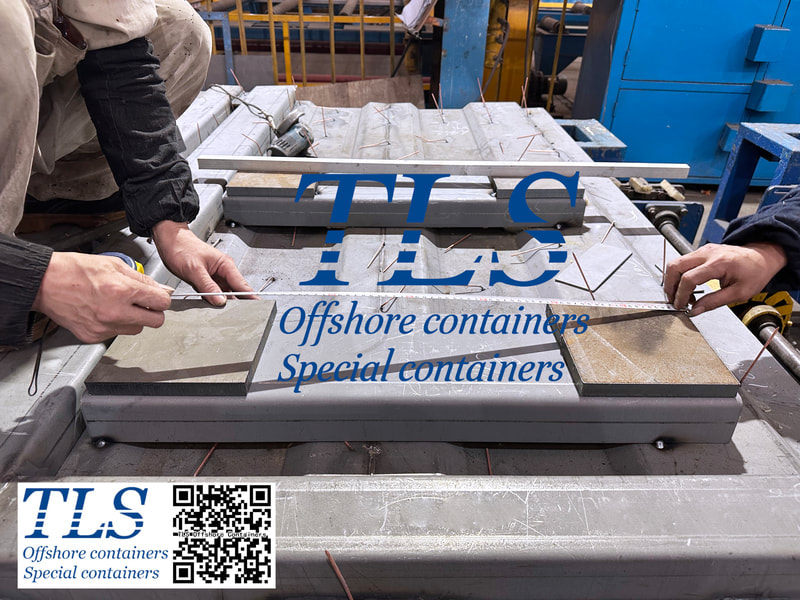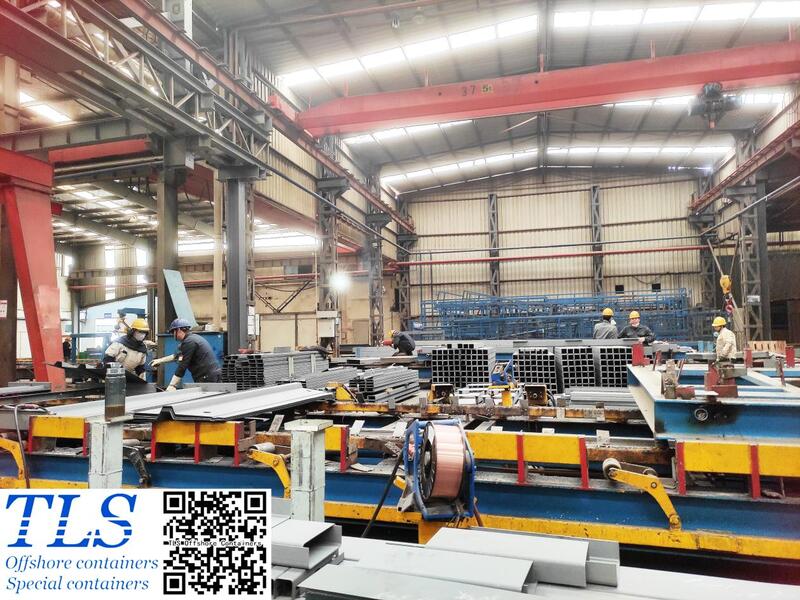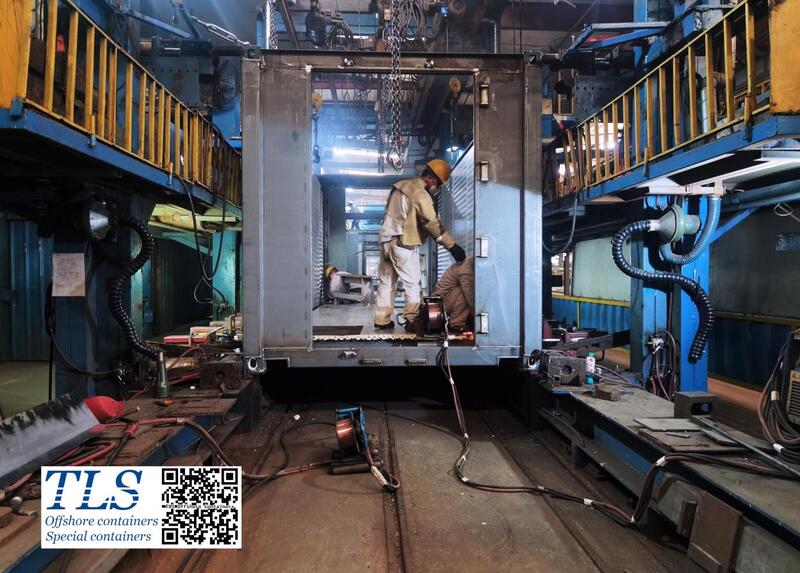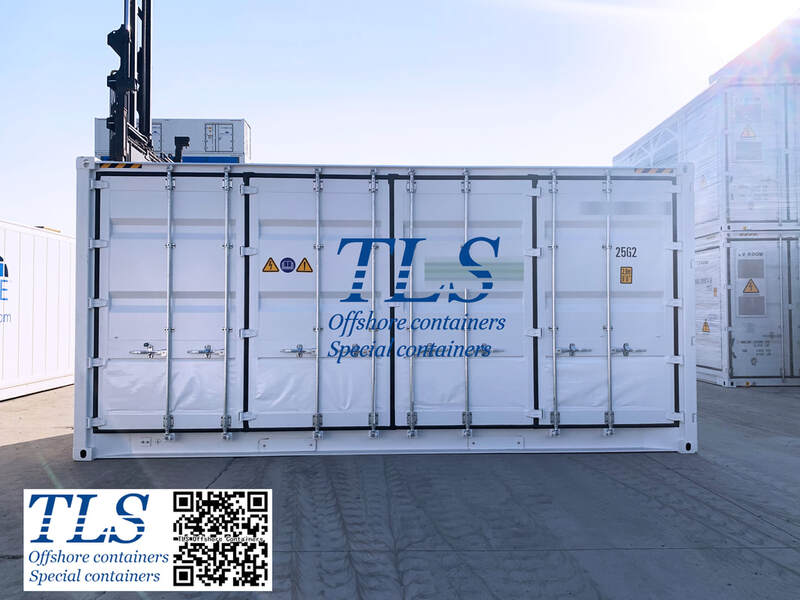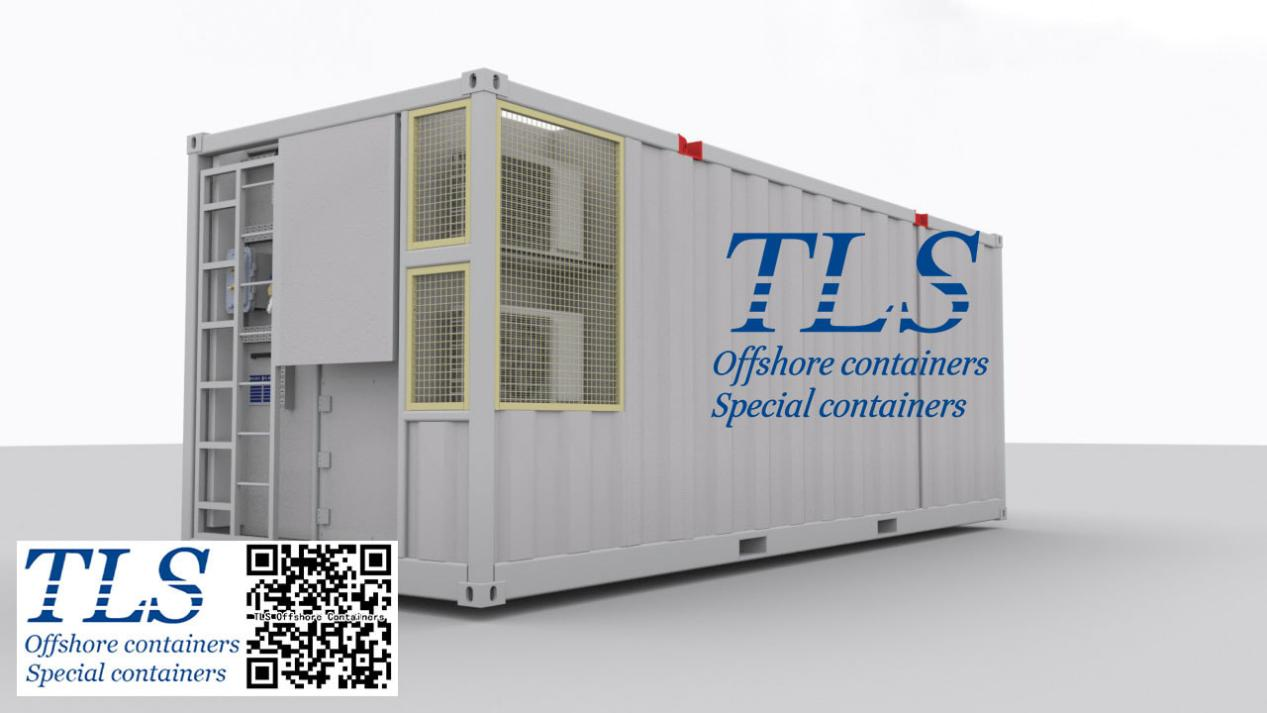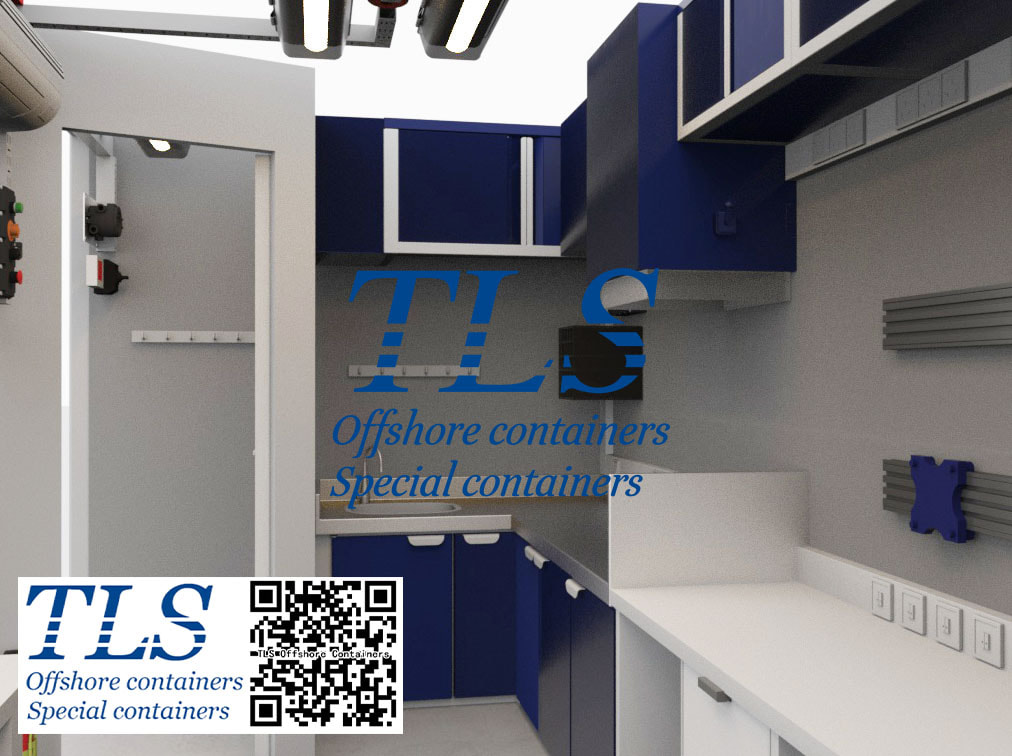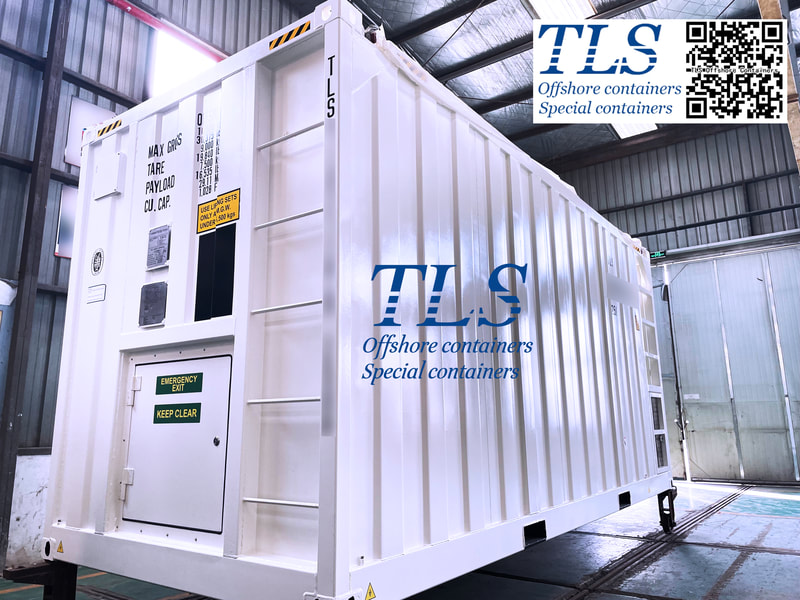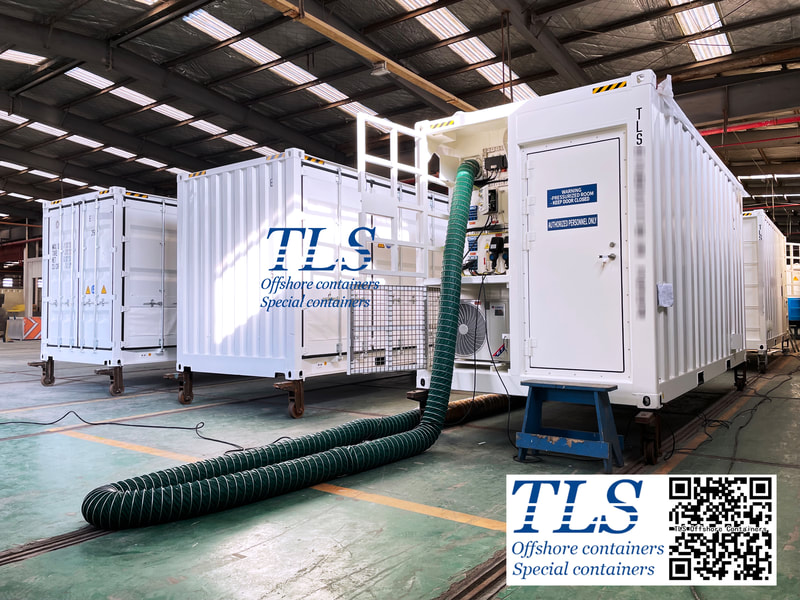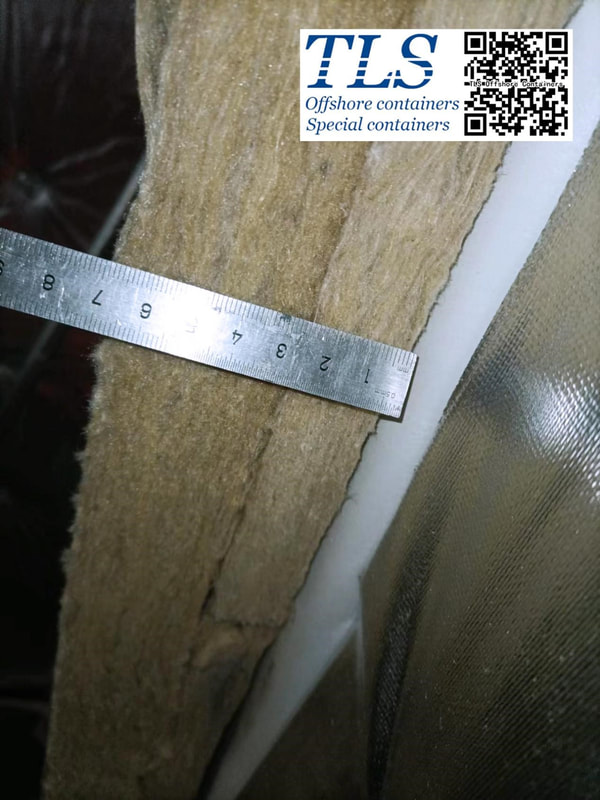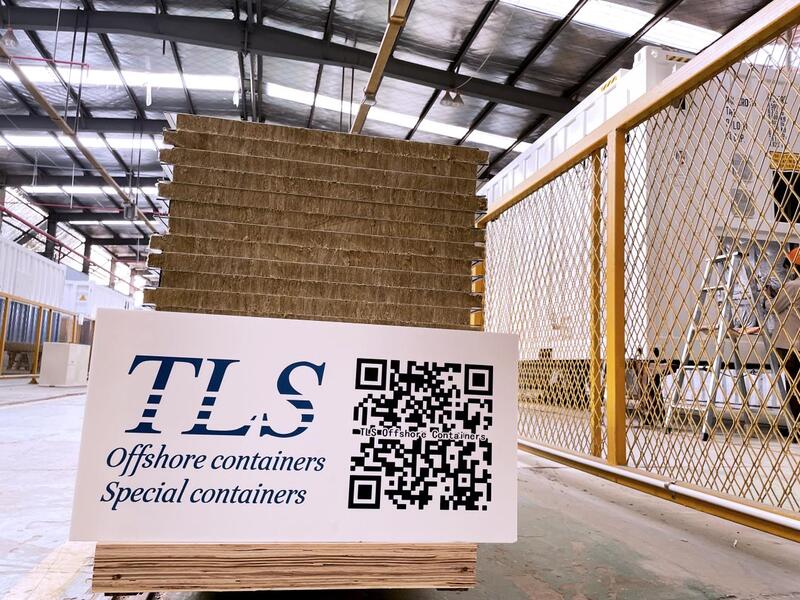A video takes you through the automatic mode operation of the 16ft positive pressure container5/30/2023
#Positive Pressure Container #DNV2.7-1 #IEC60079-13 #Automated Operation
Optimizing Battery Performance: The Role of Air-Conditioner Duct Design in BESS Containers5/29/2023
The design of the air-conditioning duct in a BESS container is a critical component that ensures the optimal performance and longevity of the batteries. This system is responsible for maintaining a stable and cool environment within the container, which is essential for the efficient operation of the batteries. The duct design in a BESS container is meticulously planned to ensure uniform distribution of cool air throughout the container. This is achieved by strategically placing the ducts in such a way that the cool air reaches every corner of the container, thereby ensuring that all the batteries are cooled evenly. The ducts are also designed to facilitate the efficient flow of air. They are typically wide and short, which allows for a higher volume of air to pass through them at a lower speed. This ensures that the cool air is distributed evenly without causing any turbulence or hot spots within the container. Furthermore, the ducts are insulated to prevent the loss of cool air. This ensures that the air conditioning system operates efficiently, thereby reducing energy consumption and operational costs. In conclusion, the air-conditioner duct design in a BESS container plays a crucial role in maintaining the optimal temperature within the container. It ensures that the batteries operate efficiently and have a longer lifespan, thereby enhancing the overall performance of the BESS container. TLS Offshore Containers, a globally recognized leader in the container manufacturing industry, has been making significant strides in the energy sector with their comprehensive range of manufacturing services for Battery Energy Storage System (BESS) containers. These containers, meticulously designed and equipped with cutting-edge technology, are not just energy storage units but a complete package of safety, efficiency, and environmental sustainability. They are a testament to TLS's unwavering commitment to delivering world-class, all-encompassing solutions to their global clientele. The BESS containers from TLS Offshore Containers are a game-changer in the energy storage sector. They are engineered to store vast amounts of energy, making them an ideal choice for regions grappling with inconsistent power supply. The portability of these containers adds another feather to their cap, facilitating easy transportation and installation at any location. This adaptability has catapulted them to the top choice among energy companies worldwide. Being a trailblazer in container manufacturing, TLS Offshore Containers has always been synonymous with expertise and quality. Their unwavering commitment to delivering top-notch container solutions has cemented their reputation as a trusted provider in the industry. The BESS containers are a shining example of their innovative approach to addressing the diverse needs of their clients. However, the BESS containers are not just about energy storage. They are a holistic solution, equipped with a fire suppression system and a liquid cooling system. The fire suppression system ensures safety by detecting and suppressing fires, while the liquid cooling system maintains an optimal temperature inside the container, thereby enhancing the lifespan and performance of the batteries. This multi-faceted approach to design and functionality makes the BESS containers a comprehensive solution for energy storage. Moreover, TLS Offshore Containers has always been a staunch advocate of environmental sustainability. The BESS containers are crafted from recyclable and sustainable materials, thereby minimizing their environmental footprint. This commitment to sustainability is woven into the company's broader strategy of paving the way for a greener future. Now, let's delve into the specifications of the BESS containers. These containers are designed to be robust and durable, capable of withstanding harsh environmental conditions. They come in various sizes, with the capacity to store a wide range of energy capacities. The containers are equipped with state-of-the-art battery management systems that monitor and control the performance of the batteries. They also feature advanced thermal management systems to maintain optimal operating temperatures. The fire suppression system is designed to detect and extinguish fires quickly, while the liquid cooling system ensures the batteries operate at optimal temperatures. All these features are housed in a compact, portable design, making the BESS containers a complete solution for energy storage needs. In conclusion, TLS Offshore Containers is a leading container manufacturing company that is making significant strides in the energy storage industry with their BESS containers. Their commitment to delivering complete and semi-complete solutions, coupled with their focus on quality, innovation, and sustainability, sets them apart from their competitors. With a diverse global clientele, the company is well-positioned to continue leading the charge in container solutions for the foreseeable future. Keywords: BESS container, TLS Offshore Containers, Battery Energy Storage System container, leading container manufacturing company, energy storage industry, global clientele, environmentally friendly, sustainable, quality, innovation, fire suppression system, liquid cooling system. The Global Market of Battery Energy Storage Systems (BESS) Containers: An In-Depth Analysis5/24/2023
**Introduction** The global energy landscape is undergoing a significant transformation, with renewable energy sources becoming increasingly prominent. Amidst this shift, Battery Energy Storage Systems (BESS) have emerged as a crucial component, enabling efficient storage and utilization of energy. This comprehensive article delves into the global market of BESS containers, highlighting their design, applications, and market forecast. **Understanding BESS Containers** BESS containers are designed to house large-scale energy storage systems. The design process involves meticulous planning, attention to detail, and adherence to industry best practices. The system typically includes a battery, power conversion system (PCS), HVAC, fire suppression system, and a smart controller. The choice of battery chemistry, such as Lithium Iron Phosphate (LFP), Nickel Manganese Cobalt (NMC), Nickel Cadmium (NiCad), or Lead Acid, depends on the specific application. BESS containers are primarily used for renewable energy integration, grid stabilization, and backup power. They play a pivotal role in supporting grid stability, integrating with renewable energy sources, and providing backup power during power outages. With the growing emphasis on renewable energy and the need for efficient energy storage solutions, the demand for BESS containers is on the rise. **The Global BESS Market: A Snapshot** The global BESS market was valued at USD 3270.06 million in 2022. However, it is not just the current market size that is impressive, but also the projected growth. The market is expected to expand at a Compound Annual Growth Rate (CAGR) of 17.59% during the forecast period, reaching USD 8644.19 million by 2028. This robust growth can be attributed to the increasing demand for renewable energy integration, grid stabilization, and backup power solutions. The residential BESS market is also set to witness considerable growth between 2023 and 2028. This growth is driven by the rising adoption of energy storage solutions in residential settings, coupled with strategic initiatives undertaken by key market players. **Driving Factors and Future Prospects** Several factors are driving the growth of the BESS market. The increasing demand for renewable energy, the need for grid stabilization, and the requirement for backup power solutions are some of the key drivers. Additionally, the declining cost of batteries, technological advancements in energy storage solutions, and supportive government policies are also contributing to market growth. Looking ahead, the future of the BESS market appears promising. The ongoing transition towards renewable energy, coupled with the increasing demand for efficient energy storage solutions, is expected to fuel market growth. Furthermore, advancements in battery technology and the development of high-capacity BESS containers are likely to provide impetus to the market. In conclusion, the global market of BESS containers is poised for significant growth in the coming years. As the world continues to embrace renewable energy and seeks efficient energy storage solutions, BESS containers are set to play a crucial role in this energy transition. The market's robust growth prospects underscore the increasing importance of BESS containers in the global energy landscape. **Additional Market Data** The global battery energy storage market size was valued at USD 9.21 billion in 2021 and is projected to grow from USD 10.88 billion in 2022 to USD 31.20 billion by 2029, exhibiting a CAGR of 16.3% during the forecast period. In the U.S., the battery energy storage system market size was valued at USD 336.6 million in 2019 and is expected to grow at a compound annual growth rate (CAGR) of 23.9% from 2020 to 2027. The growing use of battery storage systems in industries to support equipment with critical power supply in case of an emergency, including grid failure and trips, is a significant factor contributing to this growth. Moreover, according to the U.S. Energy Information Administration, large-scale battery storage has the potential to contribute 10,000 megawatts to the grid between 2021 and 2023, which is ten times the capacity in 2021. This indicates a significant increase in the adoption of BESS in the power sector. **The Role of Technology and Innovation** Technological advancements have played a significant role in the growth of the BESS market. The development of high-capacity batteries, improvements in power conversion systems, and the integration of smart controllers have made BESS containers more efficient and reliable. Furthermore, innovations in battery technology, such as the development of Lithium Iron Phosphate (LFP) and Nickel Manganese Cobalt (NMC) batteries, have improved the performance and lifespan of BESS containers. These advancements are expected to drive the growth of the BESS market in the coming years. **Government Policies and Regulations** Government policies and regulations also play a crucial role in the growth of the BESS market. Many governments around the world are implementing policies to promote the use of renewable energy and energy storage solutions. These policies often include incentives such as tax credits and subsidies, which make BESS containers more affordable for consumers. Furthermore, regulations that require power companies to maintain a certain level of energy storage capacity also drive the demand for BESS containers. These policies and regulations are expected to continue supporting the growth of the BESS market in the future. **Conclusion** The global market of BESS containers is poised for significant growth in the coming years. As the world continues to embrace renewable energy and seeks efficient energy storage solutions, BESS containers are set to play a crucial role in this energy transition. The market's robust growth prospects underscore the increasing importance of BESS containers in the global energy landscape. With the ongoing advancements in technology, supportive government policies, and increasing awareness about the benefits of energy storage, the future of the BESS market looks promising. As we move towards a more sustainable and resilient energy future, BESS containers will undoubtedly be at the forefront of this transformation. Introduction: When it comes to offshore containers, the lifting lugs play a critical role in ensuring safe and efficient lifting operations. Meeting strict requirements is crucial for their design and functionality. In this article, we will explore the key requirements for offshore container lifting lugs, keeping in mind the challenging offshore environment and the need for optimal performance. Section 1: Design Considerations for Lifting Lugs
Section 2: Alignment and Stability
Section 3: Optimal Lifting Lug Configuration
Section 4: Compatibility with Shackles
Section 5: Structural Integrity and Material Considerations
Section 6: Welding and Connection Methods
Conclusion: Complying with the strict requirements for offshore container lifting lugs is vital for safe and efficient lifting operations in challenging offshore environments. By understanding and implementing these essential guidelines, you can ensure the reliability, stability, and structural integrity of lifting lugs, promoting successful and secure lifting operations for offshore containers. TLS Offshore Containers / TLS Special Containers is a global supplier of standard and customised containerised solutions. Wherever you are in the world TLS can help you, please contact us. #Offshore containers #Lifting lugs #Design requirements #Harsh environment #Safety #Efficiency #Entanglement prevention Written by OliverIntroduction: Are you interested in understanding the production process of top-notch offshore containers? In this article, we will guide you through the essential steps and requirements for creating high-quality TLS offshore containers. From welding and structural integrity to insulation, interior paneling, and final testing, we'll cover it all. Let's dive in! Section 1: Welding and Structural Integrity To ensure robust structural integrity, all primary welds of the container frame must be performed by a certified welder. These experts employ full penetration welding techniques, guaranteeing the container's strength. Additionally, third-party inspections are conducted to verify the weld quality. Once approved, the container is painted using marine-grade coatings suitable for harsh offshore environments. Section 2: Floor Installation for Durability The floor installation process is critical for creating a durable offshore container. It begins with the laying of calcium silicate plates on the lower deck, followed by the installation of fixed steel mesh. Then, the upper deck dressings and floor dressings are carefully placed, guaranteeing a smooth surface. Quality inspectors assess and approve the floor's flatness to meet professional standards. Section 3: Insulation for Optimal Performance Efficient insulation is crucial to maintaining a comfortable and safe environment within the offshore container. During the production process, insulation material, such as rock wool, is meticulously laid in designated areas. Adequate overlap length and fireproof tape ensure proper insulation coverage and enhanced fire resistance. Section 4: Pipe, Air, and Cable Tray Installation Proper installation of water pipes, air pipes, and cable trays is essential to ensure the functionality of the offshore container. Insulation is pre-laid, and supporting booms are positioned on the top plate to secure and align the pipes accurately. This meticulous process guarantees a reliable and efficient system for water, air, and electrical needs. Section 5: Interior Paneling for a Polished Look Installing interior trim wall panels adds both aesthetics and functionality to the offshore container. First, the fixing slots are prepared, followed by the careful installation of the inner panels. Prior to installation, surfaces are thoroughly inspected to ensure smoothness and flatness, while neat and straight splicing gaps create a polished appearance. Section 6: Furniture and Appliance Installation Properly installed and secured furniture and appliances contribute to a comfortable offshore living or working space. In accordance with preliminary design drawings, furniture is positioned accordingly. Qualified professionals handle the construction of power connections, adhering to regulations and undergoing inspections to guarantee safe and reliable operations. Section 7: Testing and Acceptance TLS places great importance on the quality of their offshore containers. Various acceptance methods, including on-site inspections, video inspections, and graphic inspections, are offered to clients. Containers are shipped only after passing these rigorous acceptance procedures, ensuring the highest standards of quality. Conclusion: By adhering to stringent production processes and requirements, TLS manufactures high-quality offshore containers. From skilled welding and structural integrity to precise floor installation, insulation, pipe and cable tray installation, interior paneling, furniture and appliance setup, and thorough testing and acceptance, every step is carefully executed to deliver reliable and durable offshore containers. Trust TLS for your offshore container needs. TLS Offshore Containers / TLS Special Containers is a global supplier of standard and customised containerised solutions. Wherever you are in the world TLS can help you, please contact us. #High-quality offshore containers #Production process #Requirements #Welding #Structural integrity #Marine environment #Floor installation #Insulation Written by OliverIntroduction: Discover the numerous advantages of solar energy containers as a popular renewable energy source. From portable units to large-scale structures, these self-contained systems offer customizable solutions for generating and storing solar power. In this guide, we'll explore the components, working principle, advantages, applications, and future trends of solar energy containers. Section 1: Components of a Solar Container
Section 2: How Solar Containers Work
Section 3: Advantages of Solar Containers
Section 4: Applications of Solar Containers
Section 5: The Future of Solar Containers
Conclusion: Solar energy containers offer a reliable and sustainable energy solution with numerous advantages. Despite initial cost considerations and power limitations, their benefits outweigh the challenges. As technology continues to advance and adoption expands globally, the future of solar containers looks promising. Experience the power of solar energy containers and contribute to a greener future. TLS Offshore Containers / TLS Special Containers is a global supplier of standard and customised containerised solutions. Wherever you are in the world TLS can help you, please contact us. Regarding the Battery Energy Storage System (BESS) container, please download Energy Storage System (ESS) Containers brochure for reference. Written by OliverIntroduction: When it comes to offshore or depth drilling, ensuring safety and efficiency is crucial. Technological advancements have revolutionized the oil and gas industry, providing secure accommodations for drill operators and enabling more efficient directional drilling techniques. In this article, we will explore MWD and LWD processes, their distinctions, and the significance of zoned accommodation cabins in optimizing drilling operations. Learn how to effectively source these cabins for a successful drilling venture. What is MWD (Measurement While Drilling)? MWD, or measurement while drilling, is a well logging technique designed to overcome challenges when drilling at extreme angles. It involves incorporating measurement tools into the drill string to provide real-time information for optimized drill steering. MWD measures physical properties such as temperature, pressure, and wellbore trajectory. It accurately determines borehole inclination and azimuth, transmitting the data to the surface for immediate operator monitoring. What is LWD (Logging While Drilling)? LWD, or logging while drilling, is a methodology that records, stores, and transmits information during drilling operations. It acquires valuable formation evaluation data, including pore pressure estimates and mud weight, enabling operators to gain deeper insights into the reservoir's nature and make informed drilling decisions. LWD encompasses various techniques like electromagnetic drilling, nuclear logging, acoustic logging, and nuclear magnetic resonance logging. It facilitates geosteering, geomechanical analysis, petrophysical analysis, reservoir fluid analysis, and reservoir mapping. Differences Between MWD and LWD: While MWD falls under the umbrella of LWD, there are notable differences between these techniques.
Conclusion: In summary, MWD and LWD are crucial processes for optimizing offshore drilling operations. MWD offers real-time data transmission, primarily focusing on directional information, while LWD provides more comprehensive formation evaluation data. By understanding the differences between these techniques, companies can enhance drilling efficiency and safety. Additionally, sourcing zoned accommodation cabins plays a vital role in ensuring a successful drilling venture. Consider these factors to streamline your drilling operations and drive overall success. Please download our product brochure for your reference: Offshore pressurised mud logging cabin brochure MCC | Switchgear | VFD | VSD pressurised shelter Don’t hesitate to contact us for more information about the offshore pressurised container. #Offshore drilling #Depth drilling #Drill operators #LWD (Logging While Drilling) #MWD (Measurement While Drilling) #Drilling operations Written by OliverThe oil and gas industry operates in challenging environments that involve various hazardous materials and potentially explosive atmospheres. Understanding hazardous locations within this industry is crucial for ensuring the safety of personnel, preventing accidents, and mitigating potential damages. In this article, we will delve into the definition of hazardous locations specifically within the oil and gas industry, their classification, and the key considerations necessary for maintaining a safe working environment. Defining Hazardous Locations in the Oil and Gas Industry: Hazardous locations in the oil and gas industry refer to areas where the presence of flammable gases, vapors, combustible dust, or ignitable fibers poses a significant risk of fire or explosion. These locations include oil refineries, drilling rigs, production platforms, pipeline facilities, storage tanks, and other related installations. Due to the nature of the operations involved, strict safety measures and specialized equipment are necessary to prevent accidents and protect personnel. Classification of Hazardous Locations:
Understanding the classification system applicable to the oil and gas industry is crucial for implementing appropriate safety measures and selecting suitable equipment. Why Understanding Hazardous Locations is Important? Ensuring worker safety in the oil and gas industry, particularly on offshore rigs, is of utmost importance. The unique challenges posed by weather, water, and isolation make it crucial to address risks associated with abatement, rescue, and extraction. Offshore classification societies establish strict rules and regulations that govern offshore vessels and operations. Throughout the lifecycle of operations, from installation and commissioning to ongoing activities and decommissioning, continuous risk analysis is essential. This analysis involves assessing potential hazards and classifying the atmosphere to effectively mitigate the risks of fire and explosion. By following this process, the hierarchy of control can be implemented to enhance safety measures for equipment, processes, and personnel. In the oil and gas industry, many chemicals used in mining operations or released during extraction processes are flammable. This factor further increases the importance of risk analysis and hazard classification. Through these assessments, specific recommendations can be made regarding the appropriate class of doors, walls, or buildings needed to effectively contain fires in the event of an accident. By proactively identifying and addressing potential risks through thorough risk analysis and hazard classification, the oil and gas industry can significantly reduce the possibility of accidents, prioritize worker safety, and minimize the impact of potential incidents.equipment are necessary to prevent accidents and protect personnel. Why TLS' explosion-proof containers work in hazardous areas? Intelligent pressurized containers from TLS Offshore Containers are the ultimate solution for safe and efficient offshore energy storage. These containers are designed and constructed to meet the specific needs and requirements of the customer, with built-in HVAC and power control systems to create a safe environment for personnel and equipment. The key features of TLS intelligent pressurized containers is the incorporation of state-of-the-art safety monitoring systems. These include integrated fire and gas detection, pressurization and emergency shutdown systems, making them suitable for use in Zone 1/Zone 2 hazardous areas. This ensures that personnel and equipment are protected at all times, even in the most challenging environments. TLS Offshore Containers / TLS Special Containers is a global supplier of standard and customised containerised solutions. Wherever you are in the world TLS can help you, please contact us. #Hazardous locations #Oil and gas industry #Explosive atmospheres #Safety measures #Classification system #Hazardous substances Written by OliverAs industries and businesses continue to expand, the need for safe and reliable shipping of goods and equipment becomes increasingly important. One way to ensure this safety is through the use of containers. Specifically, containers with an A60 fire rating are becoming more and more popular. What is an A60 fire rating? An A60 fire rating is a classification that signifies the ability of a container to withstand fire. The rating means that the container can withstand temperatures of up to 1,000 degrees Celsius for up to 60 minutes. This rating is particularly important for offshore and marine applications, where the risk of fire is high due to the presence of flammable materials and gases. Why choose a container with an A60 fire rating? Containers with an A60 fire rating offer several advantages, including:
Where are A60 containers commonly used? A60 containers are commonly used in offshore and marine applications, such as oil and gas platforms and drilling rigs. They are also used for military and industrial applications that require high levels of fire protection. In addition to their fire-resistant properties, A60 containers can also be customized to meet specific industry requirements. For example, containers can be outfitted with HVAC systems, lighting, and electrical systems to meet the needs of different industries. Conclusion Choosing a container with an A60 fire rating is a wise choice for businesses and industries that require reliable and safe shipping of goods and equipment. These containers offer a high level of protection against fire, and can help prevent damage to equipment and loss of goods. They also help protect workers and the environment, and ensure compliance with industry standards. Whether used for offshore and marine applications or for military and industrial uses, A60 containers are a durable and reliable option for transporting goods and equipment. TLS Offshore Containers / TLS Special Containers is a global supplier of standard and customised containerised solutions. Wherever you are in the world TLS can help you, please contact us. #A60 fire rating, #containers, #offshore, #marine, #fire protection, #safety, #compliance, #durability Written by Oliver |
Archives
July 2024
Categories
All
|
- Home
-
Containerised solutions
- Intelligent pressurised container | MUD logging cabin
- Battery energy storage system (BESS) container
- Flexible grid tied battery storage system
- Laboratory container | workshop container | Equipment containers
- Temporary refuge shelter | Toxic gas refuge | Safe haven
- Offshore accommodation cabin | office container
- Reefer container | Refrigerated container
- Intelligent waste water treatment container
- Fresh water generator container
- Cargo Containers
- Product photos & videos
- News & Blogs
- Contact us
|
Featured products
Intelligent pressurised container Temporary refuge (TR) shelter, toxic gas refuge (TGR) Battery energy storage system (BESS) container Containerised waste water treatment plant Fresh water generator container Reefer container Laboratory container, Workshop container Accommodation container Offshore closed container |
All Rights Reserved 2020 © TLS Offshore Containers / TLS Energy
|
